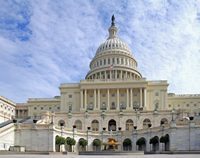The first certification deadline under the America’s Water Infrastructure Act (AWIA) for community water systems that serve 50,000-100,000 people is scheduled for December 31, 2020. Water systems within that size of population served (including consecutive system populations) need to submit an AWIA Risk and Resilience Assessment by the end of the year to be in compliance.
The U.S. Environmental Protection Agency (USEPA) has several tools to assist utilities comply with AWIA requirements. The Vulnerability Self-Assessment Tool (VSAT) helps water providers prepare the AWIA Risk and Resilience Assessment. AWIA requires that Risk and Resilience Assessments account for at least the following components:
- Malevolent acts such as vandalism or terrorism.
- Natural hazards.
- Resilience of pipes and constructed conveyances, physical barriers, source water, water collection and intake, pretreatment, treatment, storage and distribution facilities, electronic, computer, or other automated systems (including the security of such systems) which are utilized by the water system.
- Monitoring practices of the system.
- Financial infrastructure of the system.
- Use, storage, and handling of various chemicals by the system.
- Operation and maintenance of the system.
- Optional evaluation of the capital and operational needs for risk and resilience management for the system.
In addition, USEPA has an Emergency Response Plan template with instructions to help water systems develop or revise existing Emergency Response Plans. Under AWIA, each community water system must develop or revise its Emergency Response Plan no later than six months after certifying the completion of its Risk and Resilience Assessment. For community water systems serving 50,000-100,000 people, the deadline is June 30, 2021. Under AWIA, Emergency Response Plans should include:
- Strategies and resources to improve the resilience of the system, including the physical security and cybersecurity of the system.
- Plans and procedures that can be implemented, and identification of equipment that can be utilized, in the event of a malevolent act or natural hazard that threatens the ability of the community water system to deliver safe drinking water.
- Actions, procedures, and equipment, which can prevent or significantly lessen the impact of a malevolent act or natural hazard on the public health and the safety and supply of drinking water provided to communities. Such items include the development of alternative source water options, relocation of water intakes, and construction of flood protection barriers.
- Strategies that can be used to aid in the detection of malevolent acts or natural hazards that threaten the security or resilience of the system.
USEPA has an online portal called the AWIA Certification System that allows community water systems to certify the completion of Risk and Resilience Assessments and Emergency Response Plans.
The deadlines for community water systems serving 3,300 to 50,000 people are June 30, 2021 for Risk and Resilience Assessments and Dec. 31, 2021 for Emergency Response Plans. The deadlines for community water systems serving more than 100,000 were March 31, 2020 and September 30, 2020 for Risk and Resilience Assessments and Emergency Response Plans, respectively.
View the AE2S AWIA flyer here for more information or access the USEPA’s AWIA information. Contact Nate Weisenburger, AE2S Drinking Water Practice Leader, or Adam Zach, AE2S Project Engineer, for guidance on complying with AWIA requirements.

